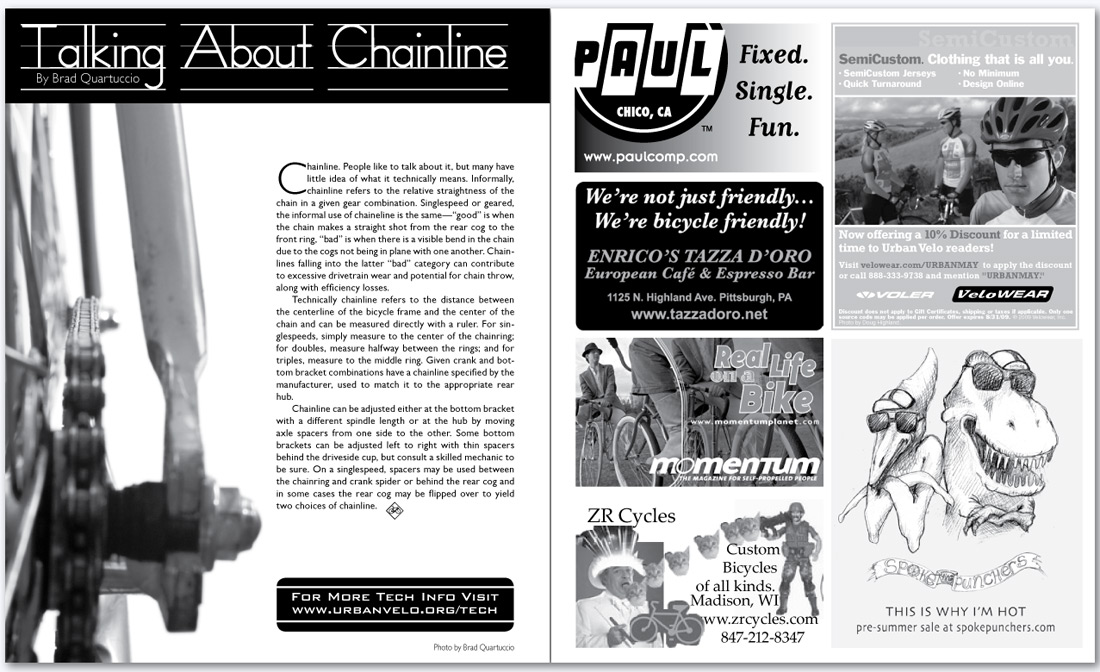By Brad Quartuccio


|
|||
Talking About ChainlineBy Brad Quartuccio Chainline. People like to talk about it, but many have little idea of what it technically means. Informally, chainline refers to the relative straightness of the chain in a given gear combination. Singlespeed or geared, the informal use of chaineline is the same—“good” is when the chain makes a straight shot from the rear cog to the front ring, “bad” is when there is a visible bend in the chain due to the cogs not being in plane with one another. Chainlines falling into the latter “bad” category can contribute to excessive drivetrain wear and potential for chain throw, along with efficiency losses. Technically chainline refers to the distance between the centerline of the bicycle frame and the center of the chain and can be measured directly with a ruler. For singlespeeds, simply measure to the center of the chainring; for doubles, measure halfway between the rings; and for triples, measure to the middle ring. Given crank and bottom bracket combinations have a chainline specified by the manufacturer, used to match it to the appropriate rear hub. Chainline can be adjusted either at the bottom bracket with a different spindle length or at the hub by moving axle spacers from one side to the other. Some bottom brackets can be adjusted left to right with thin spacers behind the driveside cup, but consult a skilled mechanic to be sure. On a singlespeed, spacers may be used between the chainring and crank spider or behind the rear cog and in some cases the rear cog may be flipped over to yield two choices of chainline.
|
|
|